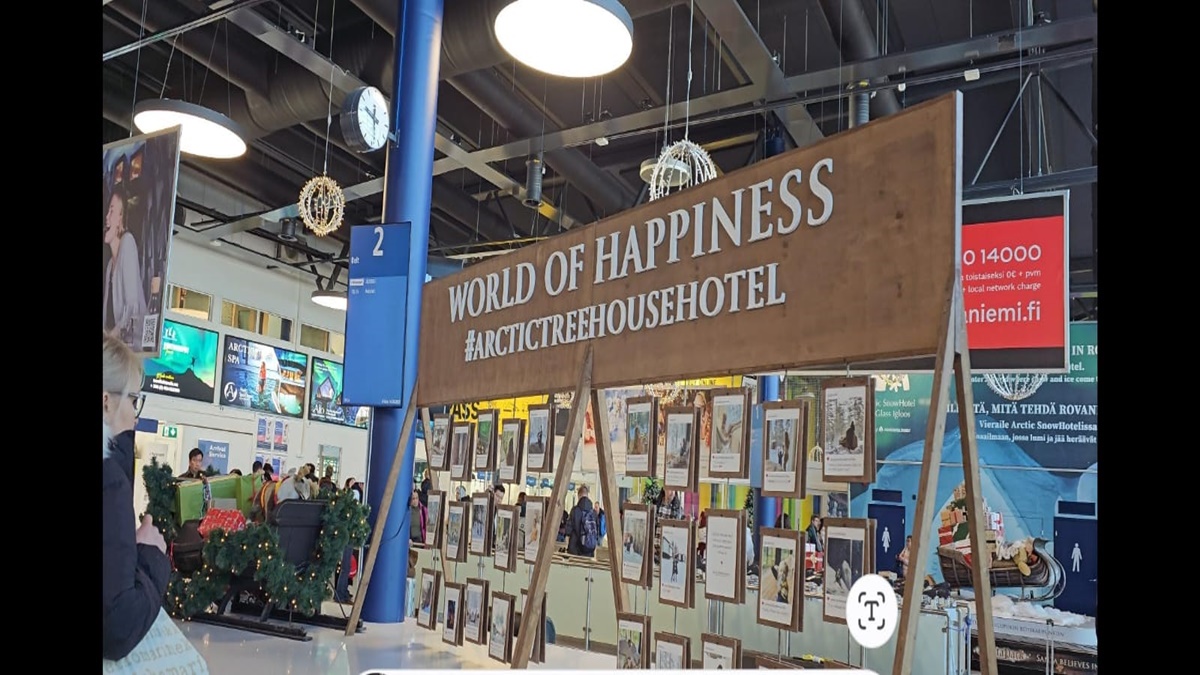Cities such as Dubai, Doha, Singapore, Abu Dhabi, and Helsinki have transformed their airports and transportation systems into centers of experience and tourism, rather than merely serving as travel hubs. This approach could be effectively implemented in a state like Madhya Pradesh with just a shift in perspective. By developing the airport and transit infrastructure with a focus on tourism, significant changes can be achieved.

Highlights
- The heart of Madhya Pradesh can unexpectedly see a surge in tourism by developing a low-overhead transit hub.
- All major highways and train routes traverse Madhya Pradesh.
- International transit facilities can encourage national and international travelers to stay for two to three days.
MP News: Editorial by Virendra Tiwari, Naiduniya. One of the most notable features of Madhya Pradesh is its central location within India. Travelers journeying from east to west or north to south frequently pass through the state. Almost all major rail, road, and air routes connect with Madhya Pradesh. Nevertheless, we have primarily viewed these travelers as mere passersby. Now is the time to transform this flow into travelers who make ‘stops.’ Several major cities across the globe have reaped substantial economic benefits from transit tourism.
Cities like Dubai, Doha, Singapore, Abu Dhabi, and Helsinki have not only utilized their airports and transport systems as transit points but have also established them as experiential tourist destinations. Features such as affordable transit visas, complimentary city tours, discounted hotel stopover arrangements, free airport transfers, and food and shopping vouchers have made these locations appealing for travelers. Guided tours from Singapore’s Changi Airport to Helsinki Airport enhance the passenger experience even further. Madhya Pradesh can adopt a similar model by merely changing its perspective. Despite limited air connectivity, the thousands of passengers traveling via trains and national highways can be persuaded to stay longer.
Kati Muoka, who promotes sustainable tourism alongside her husband.
Madhya Pradesh naturally benefits from its central location in the country. However, if we continue to treat it merely as a ‘transit’ state, others will capitalize on this opportunity. It is crucial to embrace transit tourism with a fresh outlook, encouraging travelers to experience the state’s beauty while bolstering our economy. A small step today could significantly elevate Madhya Pradesh on the global tourism map in the future. The state could become a superhub for transit via train, road, and air, especially given the extensive railway network that could integrate with transit tourism.
Passengers traveling over 500 kilometers can take advantage of a break journey option according to railway rules, allowing them to stop and stay for 1-2 days without incurring extra costs. If the MP Tourism Department collaborates with the railways to create attractive packages at major stations like Gwalior, Bhopal, Jabalpur, and Indore, it could entice thousands of travelers to extend their stay in Madhya Pradesh. In return, they would experience World Heritage Sites, natural beauty, and cultural prosperity, while the state benefits from additional tourism revenue. The MP government should implement a travel-through tourism concept, as the state also has excellent road opportunities. Over ten national highways, including NH-44 and NH-27, run through MP. Multi-service transit centers equipped with modern amenities could be developed at these locations, featuring clean restrooms, comfortable sleeping pods, branded food courts, EV charging stations, and mini tour booking counters. Similar successful tourist hubs have emerged along the ‘Route 66’ highway in the US and continue to thrive.
Tourists also experience the Northern Lights in the forests of Lapland. Each year, thousands of travelers flock to countries near Finland, Norway, and the Arctic Circle to witness this global phenomenon.
This model could be replicated at key highway junctions throughout Madhya Pradesh. Regarding air travel, the state needs to enhance regional air connectivity. Areas such as Panna, Orchha, Satna, and Rewa should be connected to major metro cities, allowing tourists to fly in the morning, enjoy local attractions throughout the day, and return by night. Special arrangements, similar to subsidized flights from Helsinki to Lapland, could be introduced here. The transit tourism model has become a multi-billion dollar industry globally. For instance, Singapore’s Changi Airport generates millions of dollars annually from travelers. Cities like Dubai and Doha have established a global identity through stopover tourism, despite their relatively small size.
Meanwhile, Helsinki, a smaller city, has successfully capitalized on Arctic tourism. The necessity of adopting a transit tourism model today is underscored by its significant economic potential. For example, if you have a stopover at Helsinki Airport in Finland, just an hour’s flight away lies the extraordinary natural beauty of Rovaniemi, the capital of Lapland. This city ensures that international travelers passing through Helsinki, such as those visiting tourism agencies, stay for at least two days to experience unique attractions like Santa Claus Village, the Northern Lights, and the Midnight Sun. Sophia, the social media manager of Visit Lapland, states that every aspect is being developed to make stays comfortable and appealing for travelers.
Rovaniemi Airport in Lapland offers direct flights from Helsinki, providing tourists with many facilities to visit the Northern Lights and Santa Claus Village.
The allure of attractions like Santa Claus Village and the Northern Lights, alongside efforts like the Midnight Sun phenomenon, has drawn significant tourist interest. Eco-tourism initiatives such as the ‘Yurt District’ are also being developed in Rovaniemi. Its operator, Mrs. Kati Muoka, aims to showcase the Finnish lifestyle while preserving natural beauty from excessive commercial development. Alongside her husband and a Mongolian assistant, Kati is working on a model within the forests that promotes sustainable tourism without harming the environment.
This same philosophy can serve as inspiration for Madhya Pradesh. If transit tourism hubs are established at railway stations, national highways, and airports, attracting passengers to stay for a few hours or days, Madhya Pradesh could emerge as a significant center for national transit tourism, showcasing its cultural richness, natural diversity, and historical heritage. This initiative would not only enhance tourism but also create substantial boosts in local employment and economic growth.
Suggestion – To advance transit tourism in Madhya Pradesh, railway stations and bus stands should feature digital displays and information desks providing details about transit tour packages. Signboards at highway tolls and major junctions should highlight nearby tourist attractions. Additionally, affordable city tour packages should be offered at airports, and partnerships between the tourism department and local hotel associations could facilitate budget-friendly accommodation and local food options.





























